It is said that butterflies are the gateway 'bug' to understanding the critical roles insects and other [sometime underappreciated] wildlife play in our ecosystems. Over the years I have given workshops and presentations on gardening for butterflies because it is an important educational construct to conservation.
One of my favorite mid-summer perennials that I recommend every pollinator gardener should have is liatris. A perennial in the family known as Compositae, that has many clusters of flowers pollinators love. Other examples include asters, sunflowers, and goldenrod. We grow two liatris species in our garden, prairie gayfeather (liatris spicata) and rough blazingstar (liatris aspera). Here they are in our front garden.
 |
front garden in August: mimosa strigilosa (groundcover), coreopsis verticillata with liatris
|
This time of year the garden is very lush. The perennial plants have grown vigorously and filled in all the open spaces that were apparent earlier in the season. The pollinators love this dense habitat.
Crowds of butterflies visit the bottle brush shaped flowers of liatris all day long. No social distancing here.
 |
| Eastern Tiger Swallowtails |
 |
silver spotted skippers
|
The small clusters of flowers open from top to bottom, supplying pollinators with nectar through the end of summer. It is such a joy \to watch the constant activity. You can't miss the swanky swallowtails with their large, colorful wings and elegant flutter.
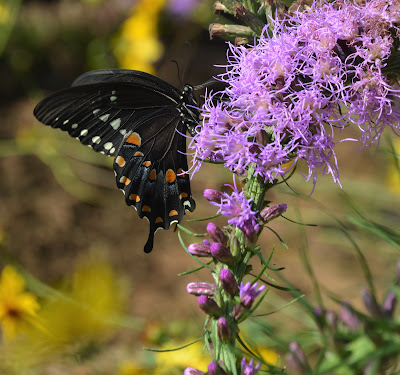 |
Spicebush Swallowtail
|
 |
| Eastern Tiger Swallowtail |
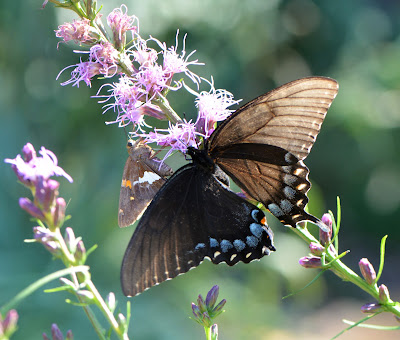 |
Black Eastern Tiger Swallowtail
|
Notice how there is always a silver spotted skipper photo booming the swallowtail photos!
Many other butterflies visit the too. Look for painted ladies, sulphurs, skippers, fritillaries and monarchs.
 |
The two sides of the the painted lady
|
But butterflies aren't the only insects that find these flowers irresistible. Bees are also constant companions as the florets provide a great source of nectar and pollen.
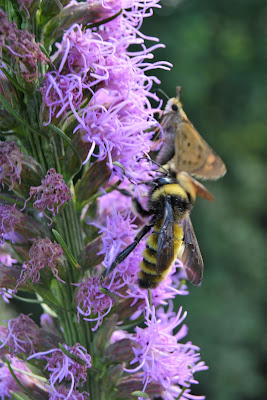 |
fuzzy bees and skippers
|
Hummingbirds and diurnal moths are here too. The clearwing moth mimics hummingbirds in their flight pattern and bees in their coloring, giving them the common name hummingbird moth or bee moth. These diurnal moths have the best of day and night, taking advantage of the floral resources that are available during the day and still able to forage for food during evening hours.
 |
clearwing moth
|
Once these tall stalks are finished blooming and the pollinators have provided their services, the song birds, especially finches, will be here feasting on the seeds.
Liatris plants require very little care. They prefer a slightly acidic, well drained soil (to prevent root rot). Plan to plant at least one species native to your area next spring for a late summer show.









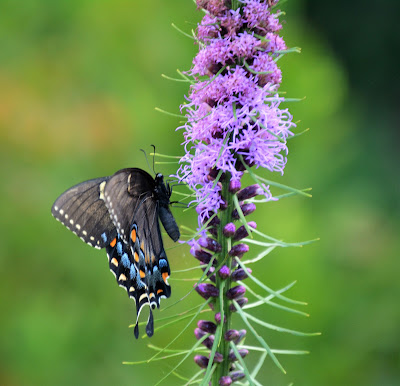
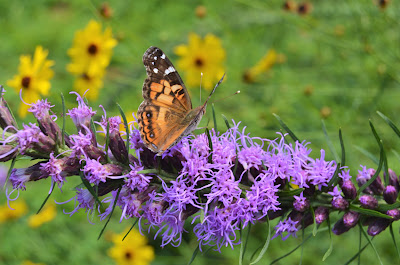
.png)
